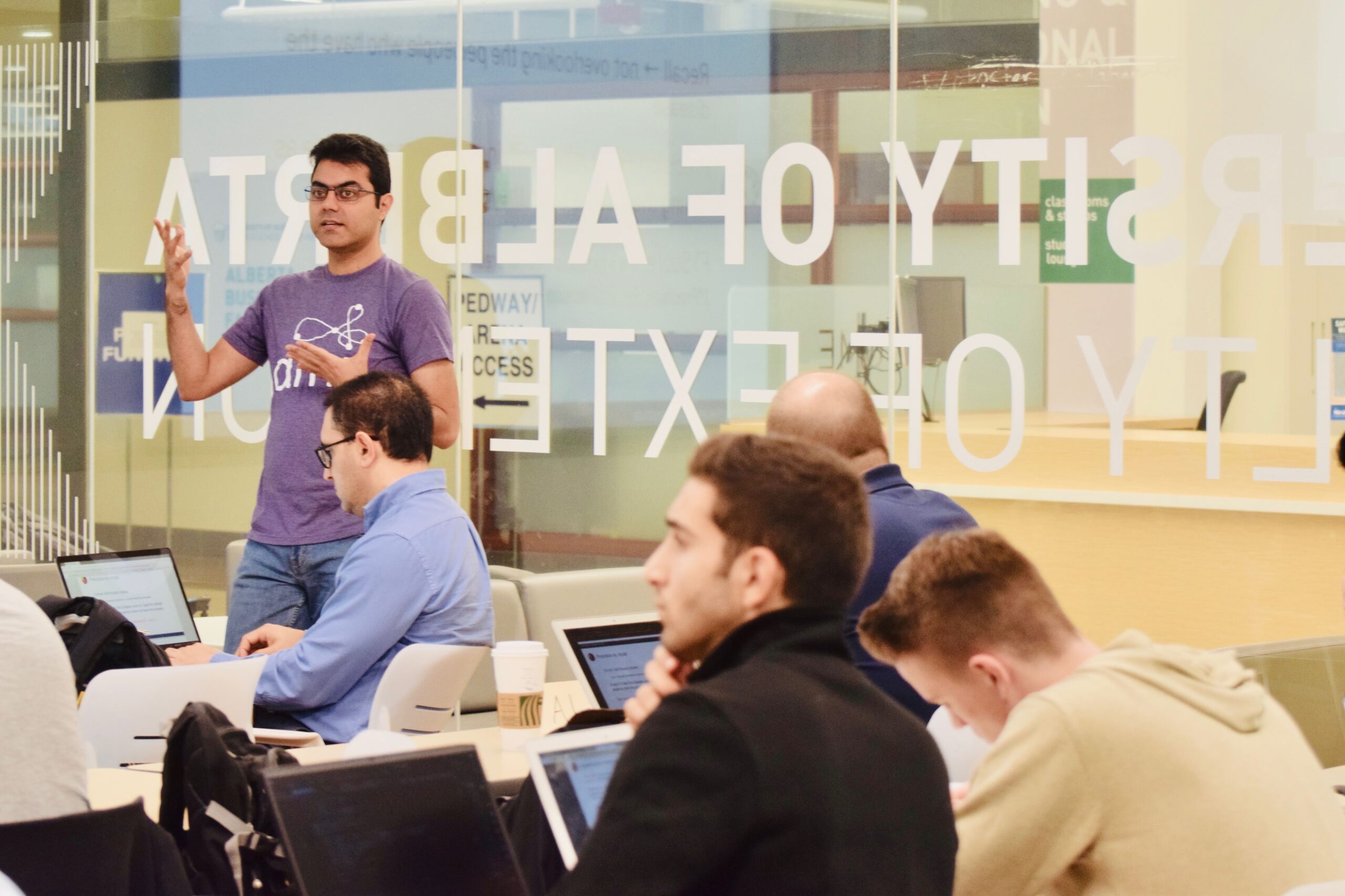Alberta Machine Intelligence Institute wants to expand agriculture, municipal technology
Posted on 16 March 2022 by adminis Machine Learning Scientist and Educator (Omid Namaki) –
Photo credit: University of Alberta Faculty of Extension
Machine Learning Scientist and Educator (Omid Namaki) –
Photo credit: University of Alberta Faculty of ExtensionLocal Journalism Initiative Reporter
The idea of artificial intelligence may bring to mind big cities or shiny self-driving cars, but the applications of machine learning could be much closer to home.
Computers are fantastic at noticing patterns and interpreting data, said Shazan Jabbar, a lead machine learning scientist at the Alberta Machine Intelligence Institute, or Amii. This quality is already in use to make human work easier in several places across rural Alberta.
“We are seeing a variety of use cases and people are trying to use AI in Alberta,” said Jabbar. “One example I could give you specifically is in the Drayton Valley Water Treatment Plant. So we are working on a project with them, Amii and University of Alberta. So it’s a collaborative project with ISL engineering. So we work on a project with them to try to use a special area in machine learning called reinforcement learning, in order to build a more adaptive treatment system, so that they can optimize the water treatment.”
The machine there is currently being developed to predict when the water will require more treatment, such as during spring runoff, and adapt without the need for human intervention. This process is still being worked on, but Jabbar believes that when it’s finished, they will have successfully taken some of the burden off of the human workers at the plant.
The energy and oil sector has also seen the benefits of machine learning, in trying to identify adverse events. Use of artificial intelligence has helped to reduce downtime in facilities, and can assist in maintenance planning and other aspects of day to day work.
However, some of the more interesting applications are future applications, and Jabbar has several ideas for how machine learning could be applied in the agricultural sector, an interest that has been shared by the sector itself.
“We have a huge interest in agriculture as well, honestly. So one of the like, the new venues, we speak about red how we machine learning and AI could be used, I am honestly seeing a lot of interest around that a lot of farmers, a lot of companies, even startup or small sized companies to like no large corporation reach out to us with this interest,” said Jabbar.
One example of how it could be used was in the monitoring of crops, said Jabbar, making the most of the computer’s ability to interpret large pools of data in a short period of time.
“We are seeing huge advancement in crop monitoring systems through satellite imagery, the usage of drones or other kinds of more ubiquitous sensor equipment,” said Jabbar. “So these have enabled us to collect large data sets, let me call it Big Data now. So enabled us to collect these big data from farms in real time. Right. So this has allowed us to utilize our resources in an optimal manner. You’re not only just looking at one data source, you’re looking at multiple data sources. So this is helpful, as in trying to see where to do what, you can intervene in more real time rather than waiting for something to happen.”
Jabbar mentions a startup outside of Alberta known as CropX, which uses ground sensors to monitor the soil and optimize the use of water.
“Using machine learning and AI, they were able to reduce water usage by up to 30%. So this is a big change, right? Especially when you have like, lack of resources. So like you have, you want to save water, for example, you’re looking at optimizing your resources. So it’s on track. So it kinda addresses multiple challenges,” said Jabbar. He suggests that similar technology could be used for pesticides or fertilizer, to get the most benefit from the smallest amount applied.
“Another interesting application I’m seeing in this space, especially in the agri sector, is the possibility of robotics. Right, we hear a lot about self-driving cars,” said Jabbar. “We may not have self-driving cars, or fully functioning self-driving cars right now. But the research area is huge, right, in this particular domain. This also like, now, of course, like people are talking about these kinds of stuff in the agriculture domain to, for example, automated tractors, or even crop picking robots.”
Jabbar feels like these advancements could become more mainstream in the future, as more businesses and individuals collect more data about their work, which is what these machines use to thrive and assist with these processes.
“People are definitely keen to learn more about how this could be helpful for them, right? I think like in any tool, any tool as they become available, you’re always going to have that phase where you need to know how it operates and how that could be useful for you,” said Jabbar, “before you start adapting those solutions, especially any provide a lot of help. We not only like to focus on developing solutions or building or solving problems, we also like to focus a lot on training and educating. I think that’s a key piece, when we are trying to help others to adapt machine learning or AI in a particular sector. But certainly I see an enthusiasm and like an interest to learn and know how this could be useful, for sure. That’s definitely there.”
Leave a Reply
You must be logged in to post a comment.
